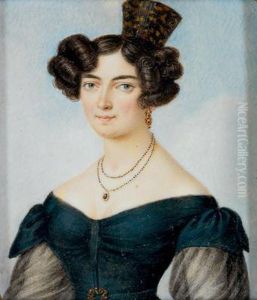Franz Xaver Fahrlander Paintings
Franz Xaver Fahrlander was a German painter known for his landscapes, historical scenes, and portraits, active during the late 18th and early 19th centuries. Born in 1740 in Mannheim, which was then part of the Electoral Palatinate, Fahrlander was exposed to the flourishing artistic environment of the Mannheim school. He received his early education in his hometown, which was a center for culture and art in the period, particularly famous for its music and theater as well.
Fahrlander developed his artistic skills in the classical tradition, which was prevalent in Europe at the time. His work was influenced by the Baroque and Rococo artistic movements, which were dominant in the earlier part of his career. However, his style also incorporated elements of the emerging Neoclassical trend, reflecting the shifting tastes of the era. He painted numerous religious themes and was known for his skill in depicting light and atmosphere in his landscape paintings.
In the latter part of the 18th century, Fahrlander's reputation grew, and he became a respected artist in his own right. Despite the turbulent political times, with the French Revolution and the subsequent Napoleonic Wars affecting much of Europe, Fahrlander continued to work and produce art. His work during this period reflected the changing times, with some of his historical scenes possibly alluding to contemporary events.
Fahrlander's career was marked by his commitment to his craft and his ability to adapt to the changing artistic styles of his time. He became a significant figure in the German art scene and his works were sought after by patrons and collectors. He continued to work up until his death in Mannheim in 1816, at the age of 76. Today, Fahrlander's paintings can be found in various art collections and museums, where they are appreciated for their historical value and artistic merit. His contribution to German art history is notable for bridging the Rococo period with the Neoclassical era, showcasing the transition in European art between the 18th and 19th centuries.
